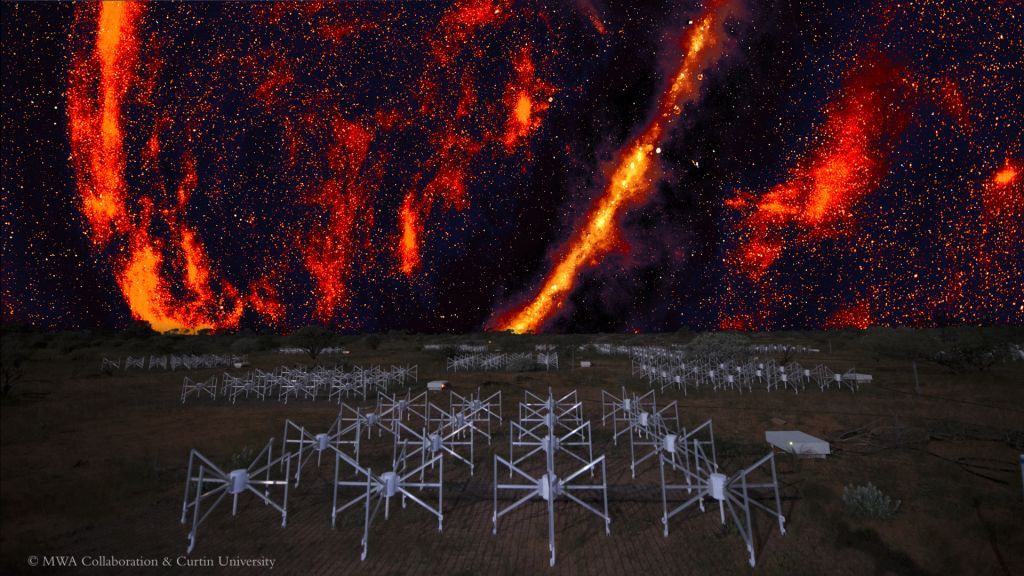A groundbreaking search for extraterrestrial signals has been conducted across over 1,300 galaxies, shedding light on the potential prevalence of advanced, communicating civilizations beyond Earth.
The ambitious project, led by Chenoa Tremblay of the SETI Institute in California and Steven Tingay, director of the Murchison Widefield Array (MWA) at Australia's Curtin University, utilised the MWA's unique capabilities to explore radio frequencies in the 80â300 MHz range. This foray into the relatively unexplored low-frequency spectrum marks a significant departure from traditional SETI searches, which typically focus on the 1,420 MHz hydrogen emission frequency.
The team focused their attention on a 30-degree field of view within the constellation Vela, encompassing 2,880 galaxies. Their research targeted 1,317 galaxies with previously measured redshifts, providing accurate distance estimations and enabling the calculation of potential transmitter power limits.
While the initial search yielded no conclusive alien signals, Tremblay and Tingay's research established a significant benchmark. Their study indicates that they would have been able to detect a transmitter emitting at 100MHz with a power of 7 x 10^22 watts.
"This work represents a considerable leap forward in our quest to detect signals from advanced extraterrestrial civilizations," stated Tremblay. "The MWA's wide field of view and low-frequency range make it an ideal tool for this type of research, and the limits we have established will guide future investigations."
For decades, SETI efforts have primarily focused on stars within our own Milky Way galaxy. However, recent years have seen an expansion of the search, casting a wider net across the cosmos.
The Glimpsing Heat from Alien Technologies (G-HAT) project, for example, surveyed 100,000 galaxies using NASA's Wide-field Infrared Survey Telescope (WISE) in 2015, searching for hypothetical "Dyson swarms" â hypothetical megastructures designed to harness the energy of entire stars. This endeavour, like many others, yielded no definitive evidence of extraterrestrial technology.
In 2023, a team led by Yuri Uno of the National Chung Hsing University in Taiwan proposed that, based on current observations, there might be no more than one civilisation within three billion light-years of Earth capable of transmitting radio signals with a power exceeding 7.7 x 10^26 watts.
Similarly, a study conducted by Michael Garrett of the Jodrell Bank Center for Astrophysics and Breakthrough Listen's Andrew Siemion constrained the maximum detectable power of alien transmitters within a range of approximately 10^23 watts to 10^26 watts. This range, dependent on the distance to the originating galaxy, further highlights the challenges involved in detecting faint signals from distant worlds.
The absence of detected signals, however, does not definitively rule out the existence of technologically advanced extraterrestrial life. Our observational capabilities remain limited, covering only a fraction of the vast and expansive universe. Furthermore, the cost of maintaining powerful intergalactic radio beacons could lead to their temporary deactivation, potentially explaining the lack of detectable signals. Additionally, the possibility exists that such beacons might be directed towards other galaxies, leaving Earth outside their transmission range.
The scarcity of Kardashev Type 2 and 3 civilizations, those harnessing the energy of entire stars and galaxies respectively, could further explain the absence of high-powered transmitters. While such advanced civilizations may be rare, it is possible that less powerful, yet detectable, beacons may still exist. Moreover, this latest survey's focus on low frequencies does not preclude the possibility of alien transmitters operating at higher frequencies, awaiting future detection.
Tremblay and Tingay underscore the significance of low-frequency radio emissions in Earth's history, highlighting the presence of powerful terrestrial radio emitters and early human communication signals within this spectrum. They argue that the relative dearth of SETI searches within this frequency range justifies continued exploration, with the potential for unexpected discoveries.
"Continued collaboration to comprehensively cover the frequency spectrum will be essential for future advancements," conclude Tremblay and Tingay in their paper, published on 26 August in *The Astrophysical Journal*.
This latest research, while not yielding definitive proof of extraterrestrial intelligence, serves as a valuable contribution to the ongoing search for alien signals. It emphasizes the importance of exploring diverse frequency ranges and pushing the boundaries of our observational capabilities in the quest to answer one of humanity's most profound questions: Are we alone?
Article
Technology

Searching for ET: 1,300 Galaxies Scanned for Alien Signals in Unexplored Frequencies

